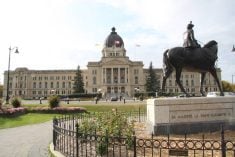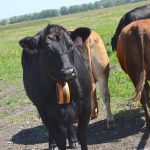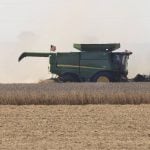BAWLF, Alta. – A central Alberta school has proved rural students can
get as good an education as kids in the city.
For the second year in a row, the Bawlf high school has made the top 10
list of high schools in Alberta for academic achievement, coming close
to elite city schools that only accept honours students.
The Fraser Institute ranked Bawlf high school eighth out of 270 high
schools across the province in its annual report card on Alberta
Read Also

Why feds imposed EV tariffs
Moe and Kinew have a fight on their hands when it comes to eliminating the EV tariff. Canada has to worry about pissing off the U.S. and Mexico and hundreds of thousands of auto workers.
secondary schools.
The elementary portion of Bawlf School tied for 77 out of 752
elementary schools in Alberta.
“What it tells me and my staff is we’re doing a good job with the type
of kids that come to our school,” said Bawlf school principal Doug
Bowie, who has been principal at Bawlf for the past 16 years.
“We take everyone who comes in the door.”
Kids that are having problems in larger schools often transfer to Bawlf
to finish in a smaller school where success is an expectation. Part of
the point system in the Fraser Institute report is based on the number
of students that enter Grade 10 and the number who graduate.
“The staff really cares and they go out of their way for these high
school students,” Bowie said.
“It’s a push, pull and drag deal. We’re not going to give up on you,”
he said of students who struggle.
Some students even get a wakeup call in the morning to ensure they
attend. Others are kept in school by an interest in sports, drama or
arts.
“We hook them in and we pull them along,” said Bowie. “I can never say
enough kind things about this staff. They will go out of their way to
help kids succeed, yet they are very demanding.”
Bawlf was once a prosperous community in the middle of an agriculture
area, but now there are few businesses left on Main Street and farms
are getting farther apart. Most people commute to work or shop in
nearby Camrose. Only one grain elevator remains along the railway.
Isolation is part of the reason for the school’s success, said Bowie.
Unlike larger centres with the attractions of malls or restaurants,
there are not many places for students to go if they’re not in school.
“There’s not many distractions. If someone’s missing, we know.”
There are 343 students in the school, with 130 in high school. The
small student enrolments allow most classes to have only 21 or 22
students.
Each year after the provincial exam results are released, Bowie and his
staff analyze them to see where they can improve. School associations
have criticized the Fraser Institute reports, saying they only measure
academic achievement and don’t take into account the larger picture.
But Bowie said his school would do well even if other factors were
considered. Teams have won provincial championships, the music group
goes on band trips and all classes take field trips.
“If you looked at the whole, we’d be ranked even higher.”
For the last two years Bowie has won the Garfield Weston award for
outstanding principal for achieving results beyond expectations. He’s
nominated for the award again this year.
Despite the high academic achievement, Bowie is worried it won’t be
enough to save the school if the Battle River School Division is forced
to close schools because of budget cuts.
Daysland is 15 kilometres down the road, Camrose is 26 km the other way.
“If they want to downsize, where would it be,” said Bowie of his school
in the middle.
He knows the local school division understands and appreciates the good
results, but in the end it’s the provincial government that controls
the education purse and can force cuts.
But Bowie said high achievement test marks are good insurance.
“It’s like security to have good results.”














